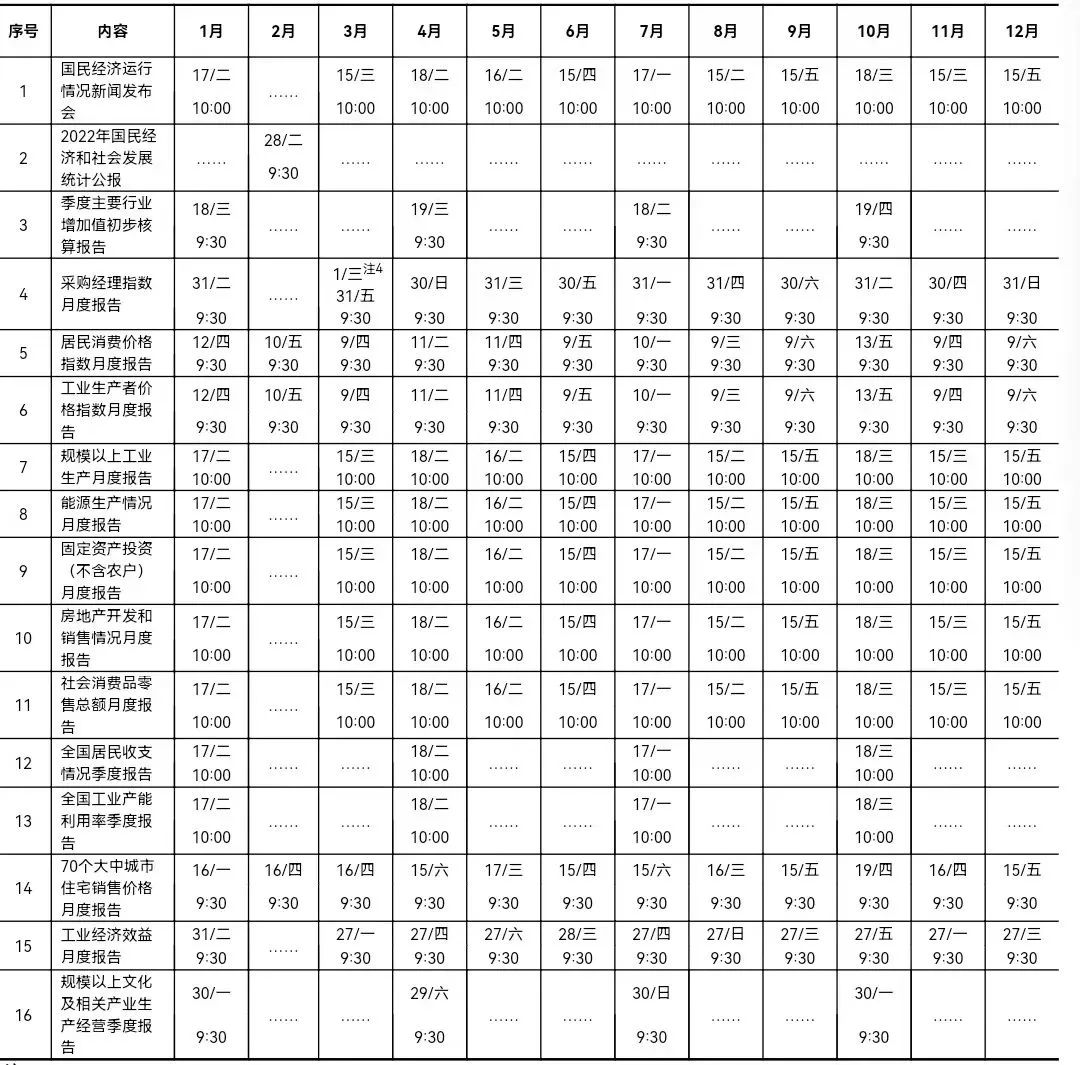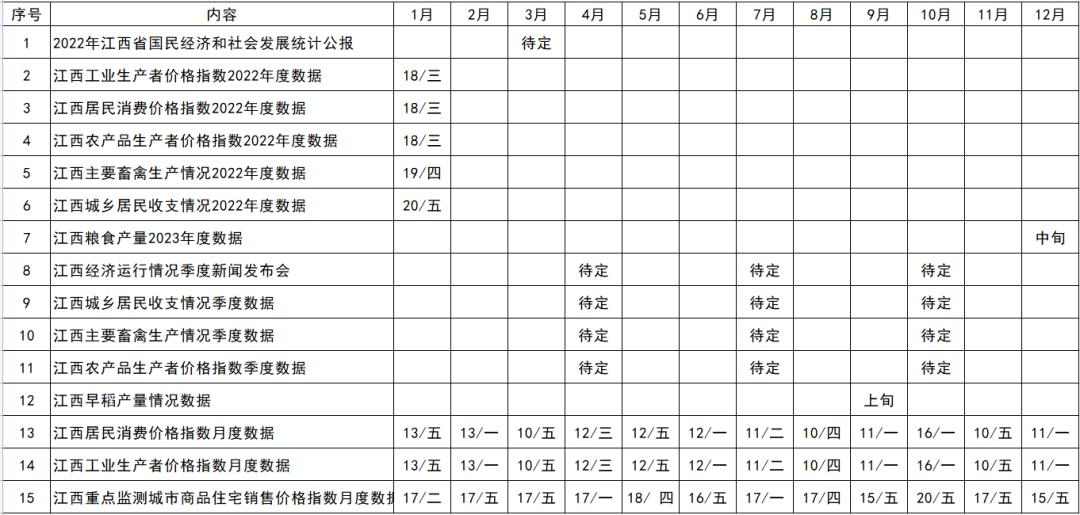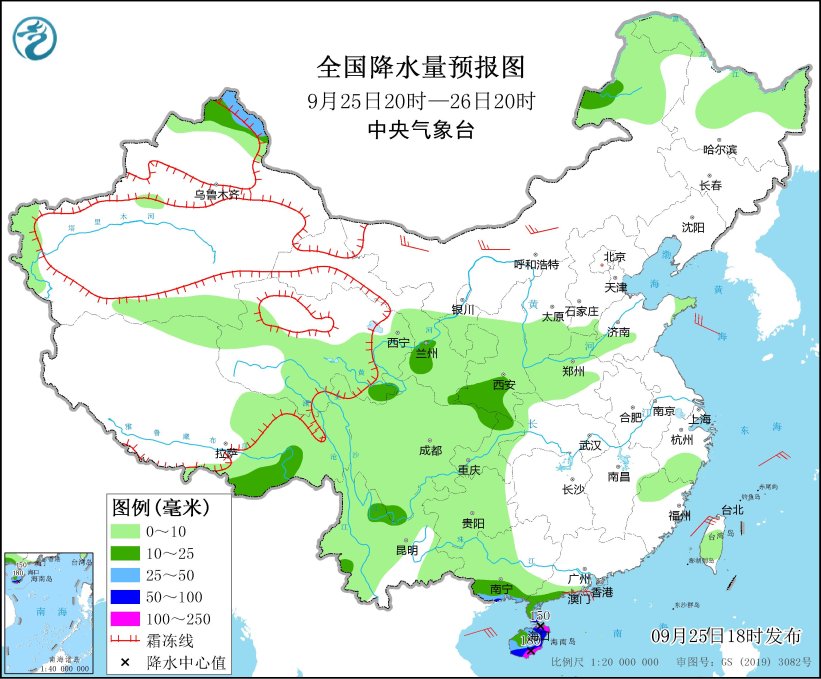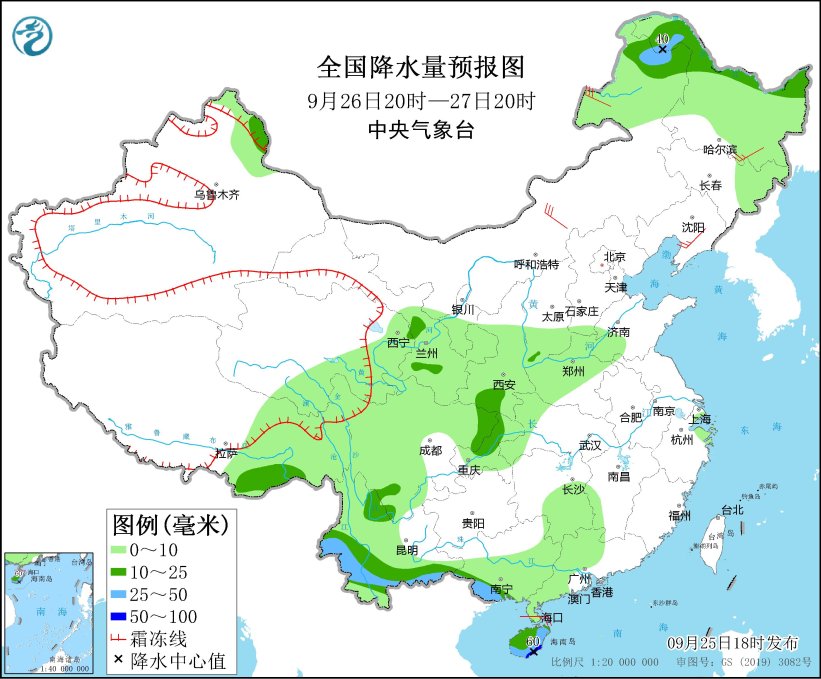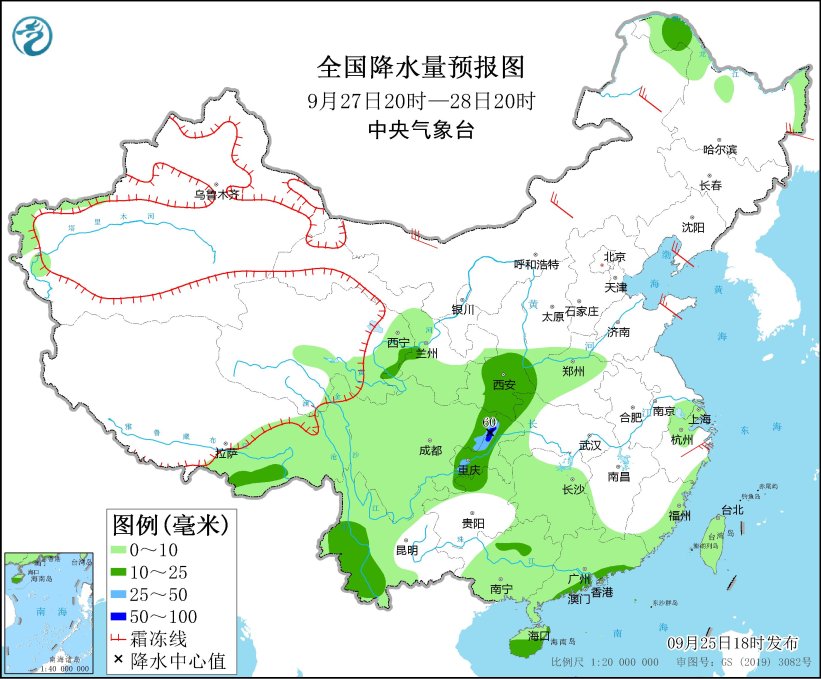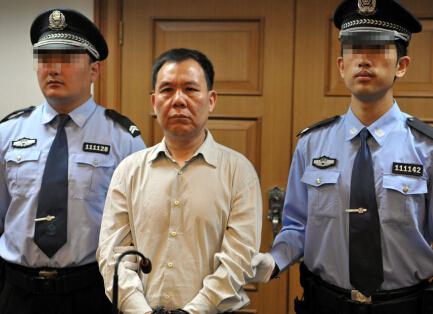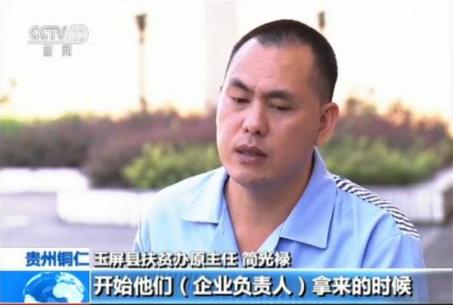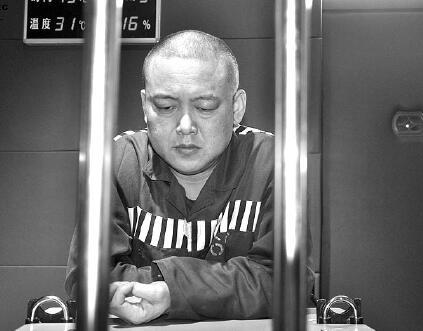In order to fully implement the Central Rural Work Conference and "Several Opinions of the Central Committee of the Communist Party of China and the State Council on Accelerating Agricultural Science and Technology Innovation and Continuously Enhancing the Supply Guarantee Ability of Agricultural Products" (Zhongfa [2012〕oneNo.), as well as the spirit of the national agricultural work conference, and earnestly do a good job.2012Agricultural and rural economic work in 2000, we hereby put forward the following opinions, please combine the actual situation and earnestly implement them.
2011In 2000, faced with severe challenges such as abnormal natural disasters and abnormal fluctuating market environment, agricultural departments at all levels resolutely implemented the deployment requirements of the CPC Central Committee and the State Council, successfully completed the goal and task of "doing everything possible and making efforts to ensure", and consolidated and developed the good momentum of stable development of agricultural and rural economy. Grain production has reached a new record high, reaching the first step.11000A new step of 100 million Jin has been stable for five consecutive years.oneMore than one trillion Jin, achieving the first eight consecutive years of production increase in half a century. The output of major agricultural products increased in an all-round way, the market supply of agricultural products was sufficient, the quality and safety remained at a high level, the situation of major animal epidemics was generally stable, agricultural machinery, agricultural reclamation and township enterprises continued to develop, and the import and export trade of agricultural products grew rapidly. Farmers’ income has achieved double-digit growth, the highest in history, and the growth rate has exceeded that of urban residents for two consecutive years. Increasing agricultural production and increasing farmers’ income have won the initiative to curb excessive price increases and cope with the international financial crisis, and made important contributions to maintaining stable and rapid economic development and maintaining social harmony and stability.
20122008 is an important year for implementing the Twelfth Five-Year Plan, and our party will hold the 18th National Congress. Doing a good job in agricultural and rural economy, ensuring the effective supply of agricultural products and increasing farmers’ income continuously are of special significance to the overall economic and social development. The CPC Central Committee and the State Council have put forward new and clear requirements for accelerating agricultural scientific and technological innovation, continuously improving the supply guarantee capacity of agricultural products, and promoting the rapid growth of farmers’ income, and issued stronger support policies. The development of agricultural and rural economy faces many favorable conditions. But at the same time, it also faces many challenges, such as high development base and production cost, uncertain climatic conditions and market changes. It is obviously more difficult to maintain stable grain production and increase farmers’ employment and income, and the task is even more arduous and arduous. Agricultural departments at all levels must strengthen their sense of hardship and responsibility, estimate the difficulties and problems more fully, make good preparations for the response, do all the work well, and be sure to prevent blind optimism, lax work and weakened policies, prevent turning points in grain production and decline in farmers’ income, and resolutely consolidate and develop the hard-won good situation.
2012The general requirement of agricultural and rural economic work in is to conscientiously implement the decision-making and deployment of the Central Rural Work Conference and the Central CommitteeoneDocument No.1, thoroughly implement the spirit of Scientific Outlook on Development, focus on the stable development of grain production, accelerate agricultural scientific and technological innovation, comprehensively promote the construction of modern agriculture, adhere to the goal of "two ways to ensure two efforts", and do everything possible to stabilize grain production.10500More than 100 million Jin, the increase in farmers’ income remained at7.5%Above all, efforts should be made to ensure that major agricultural product quality and safety incidents and regional major animal epidemics do not occur, continuously improve the supply guarantee capacity of agricultural products, and provide a basic guarantee for achieving stable and rapid economic and social development.
First, implement and improve the policy of strengthening agriculture, benefiting farmers and enriching farmers, and further increase agricultural support and protection.
oneFully implement the policy of strengthening agriculture, benefiting farmers and enriching farmers.2012In, the central government continued to increase investment in agriculture, rural areas and farmers, and the increment and proportion of financial investment, investment in fixed assets and investment in agricultural science and technology all increased. Agricultural departments at all levels should seize the rare opportunity, do a good job in implementation and supporting, strengthen policy propaganda, increase supervision, and ensure that the central government’s policy of strengthening agriculture, benefiting farmers and enriching farmers is fully implemented at the grassroots level and fulfilled by farmers. The "four subsidies" for agriculture, the creation of high-yield grain, cotton, oil and sugar, the compensation for grassland ecological protection, the reward and subsidy for large production counties, and the special production of "vegetable basket" will be the focus of policy implementation, and the new subsidies will be actively promoted to the main producing areas, large farmers and farmers’ professional cooperatives. Promote the improvement of the interest compensation mechanism in the main producing areas, and implement the incentive and subsidy policies for large grain (oil) producing counties and large counties where pigs are transferred. Promote the improvement and implementation of policies such as the minimum purchase price of grain, temporary storage and storage of bulk agricultural products, and regulation of the pig market, explore the establishment of a price stability mechanism for major vegetable varieties, and maintain a reasonable level of agricultural products prices. Actively promote agricultural aid to Xinjiang and Tibet and poverty alleviation and development, strengthen financial, technical and talent support, and promote coordinated regional development.
2Promote the improvement of supporting policies such as rural finance and rural social development.We will continue to improve rural financial support policies, innovate rural financial institutions, products and services, guide farmers’ professional cooperatives to standardize credit cooperation, and explore effective ways to meet rural financial needs. Promote the expansion of agricultural insurance types and coverage, increase premium subsidies, carry out pilot projects of premium subsidies for facility agriculture, support the development of fishery mutual insurance, and encourage local governments to carry out production insurance for advantageous agricultural products. We will implement the policy of rebuilding dilapidated houses in agricultural reclamation areas, steadily promote the process of urbanization in agricultural reclamation areas, and accelerate the improvement of the living environment of farm workers. Promote rural social management innovation and cultural construction, promote the implementation of rural social security, compulsory education and secondary vocational education, culture benefiting the people and other policies, and accelerate the improvement of rural people’s livelihood.
Two, to seize a good harvest of grain production, stable development of cash crops such as cotton, oil and sugar production.
threeDo a good job in grain production without slackening.Do everything possible to stabilize the sown area of grain, rely on science and technology to improve the yield and quality, and realize the increase of summer grain and early rice production and the stability of autumn grain. Summer grain pays special attention to drought resistance and pest control in winter and spring, and implements drought-resistant watering and "one spray and three defenses" for wheat. Early rice pays special attention to soil preparation and seedling raising, and promotes the application of greenhouse seedling raising and centralized seedling raising technology. Autumn grain highlights the promotion of early maturity and disaster prevention and reduction, pays special attention to corn production, actively implements drip irrigation under plastic film in northeast China and full film mulching technology in northwest China, and taps the potential of corn yield increase. We will continue to carry out actions to stabilize grain production, improve the mechanism of coordinated supervision of grain production by various departments, organize the assessment and evaluation of comprehensive grain production capacity, and promote the implementation of the grain governor responsibility system. We will continue to strengthen the promotion of the establishment of an integrated system for high-yield grain production, select large grain-producing cities with good basic conditions, great potential for increasing production and high scientific and technological level, and take the lead in launching pilot projects for the establishment of high-yield grain preparation cities. Promote the combination of high-yield demonstration films with high-standard farmland construction, leading enterprises in agricultural industrialization, farmers’ professional cooperatives and various social service organizations, improve the production conditions of high-yield demonstration films, and improve the degree of organization of grain production in terms of agricultural materials supply, farming harvest, production management, and pest control. Strengthen agricultural disaster prevention and mitigation, strengthen soil moisture situation and production situation monitoring and disaster prediction and early warning, accelerate the professional unified prevention and control of crop pests and diseases, and improve the support policies for the prevention and control of major pests and diseases.
fourCoordinate the development of cash crops such as cotton, oil and sugar.Support superior producing areas to strengthen the construction of production bases such as cotton, oilseeds and sugar, stabilize the area, optimize the layout, improve the yield and improve the efficiency. Continue to promote the establishment of high-yield cotton, oil and sugar, carry out pilot projects in the whole town, organically combine with technical demonstration and promotion such as cotton seedling transplanting, healthy sugarcane seedling and mechanization of the whole production process, strengthen technical training and on-site observation, and effectively enhance the demonstration and driving effect. Strengthen the construction of natural rubber and other hot production bases, optimize the layout of production structure, cultivate superior and characteristic products, and improve the level of industrial development.
fiveAccelerate the construction of modern agriculture in state farms.Focusing on irrigation and water conservancy, material equipment and scientific and technological innovation, we will strengthen the construction of large-scale production bases for high-quality agricultural products in agricultural reclamation, further improve the supply guarantee capacity of grain, sugar, cotton, pigs, cows and natural rubber in agricultural reclamation, and give play to the demonstration and leading role of agricultural reclamation in modern agricultural construction. Support the development of state-owned agricultural enterprises in agricultural reclamation, make good use of state-owned capital budget investment, promote resource integration and capital operation, promote industrial transformation, and cultivate a number of large multinational agricultural enterprise groups.
Three, the stable development of "vegetable basket" product production, to ensure the effective supply of major agricultural products.
sixImprove the production level of horticultural products such as vegetables.Implement the national vegetable industry development plan and strengthen the construction of production bases in advantageous producing areas. Stabilize the amount of vegetable fields in large and medium-sized cities and improve the self-sufficiency of local seasonal vegetables. Strengthen the monitoring of vegetable production information and expand the monitoring scope to580A key county of vegetable industry. Support the construction of intensive vegetable nursery and improve the level of vegetable production facilities. We will continue to establish standard gardens for horticultural crops such as vegetables, fruit trees and tea, and promote standardized production.
sevenDo a good job in the production of major livestock products such as pigs, cattle and sheep.Stabilize the development of pig production, effectively improve the sow’s farrowing ability, the survival rate of piglets and the scientific raising level of pigs, strengthen production monitoring and situation prediction, improve the control plan as soon as possible, start the control measures at the right time, and strive to avoid large fluctuations in pig prices. Vigorously support the production of beef and mutton, focusing on ensuring the production and supply of beef and mutton in ethnic areas. Promote the transformation of grassland animal husbandry production mode in pastoral areas, promote large-scale, intensive production and efficient centralized fattening in northern agricultural areas and semi-agricultural and semi-pastoral areas, and promote moderate-scale breeding in southern areas. Vigorously improve the standardization and thoroughbred level of beef and mutton production, strengthen the construction of beef and mutton production counties, and improve the comprehensive production capacity of beef and mutton. Do a good job in the construction of forage base and start the implementation of the action to revitalize the development of alfalfa in dairy industry. Continue to promote the development of standardized scale breeding of livestock and poultry and strengthen the construction of improved seed breeding system.
eightPromote the healthy development of fisheries.Expand the establishment scale of aquaculture demonstration farm, carry out the pilot project of aquaculture ecological environment restoration, speed up the standardization transformation of ponds, improve the comprehensive production capacity and disaster prevention and mitigation capacity of aquaculture, and ensure the safe and effective supply of aquatic products. We will carry out the construction of improved seed system and the promotion of production norms, build a number of genetic breeding centers and original seed farms for large varieties and superior varieties, comprehensively promote the quarantine of aquatic seed production areas, and improve the ability to ensure the production of original aquatic seed, the selection of new varieties and the adjustment of seedlings after disasters. Support the expansion of offshore fishing, support the upgrading of professional and standardized offshore fishing boats and the development of new fishing grounds resources. Strengthen the construction and management of fishing ports and fishery administration. Promote the project of fishermen who take boats as their homes to live ashore.
nineIn-depth implementation of a new round of "vegetable basket" project.Strengthen departmental communication and coordination, and promote the implementation of various policies to support the development of the vegetable basket industry. Promote local governments to strictly implement the "vegetable basket" mayor responsibility system, and explore the responsibility assessment around indicators such as the amount of production land, the self-sufficiency rate of key products, the qualified rate of product quality and safety, and the ability to support emergency supply.
Four, strengthen the quality and safety supervision of agricultural products, and make unremitting efforts to prevent and control major animal diseases.
10Strengthen the safety supervision of agricultural product pledge.We will continue to carry out in-depth special rectification of the quality and safety of agricultural products, effectively strengthen the special rectification of "Clenbuterol" and the quality and safety supervision of raw milk, and implement centralized management of outstanding problems in individual products. We will further improve the routine monitoring system for the quality and safety of agricultural products at the national and provincial levels, supervise the production, management and use of agricultural, veterinary drugs and feed throughout the process, and strictly regulate the use of feed additives. Further increase the intensity of agricultural counterfeiting, strengthen the linkage between inspection and crackdown and comprehensive law enforcement. Vigorously promote new fertilizers and pesticides with high efficiency, safety, low toxicity and low residue. Accelerate the pace of revision of agricultural standards, strengthen the certification and supervision of "three products and one standard", support the overall promotion and demonstration of agricultural standardization, and start the construction of national agricultural product quality and safety supervision demonstration counties. Improve the quality and safety risk assessment system of agricultural products, carry out quality and safety risk assessment, and promote the construction of quality and safety inspection and testing system and traceability system of agricultural products. Accelerate the construction of quality and safety supervision institutions for agricultural products in towns and villages, and ensure that all towns and villages in China basically establish quality and safety supervision service institutions for agricultural products by the end of the year.
11Pay close attention to the prevention and control of major animal diseases.Implement various measures such as compulsory immunization, quarantine supervision, epidemic monitoring and emergency management, improve the quality of immunization, decisively deal with sudden outbreaks, and prevent the spread of the epidemic. Effectively strengthen vaccine quality supervision, strictly implement daily supervision, flight inspection, factory supervision, batch issuance and other management systems, urge enterprises to organize vaccine production and inspection activities in strict accordance with production regulations, and strictly control the quality of raw materials for vaccine production. We will do a solid job in the basic monitoring of priority disease prevention and control, carry out special monitoring of avian influenza, foot-and-mouth disease and brucellosis pathogens throughout the country, and launch the implementation of key single animal disease prevention and control plans. Implement the disease purification plan for breeding livestock and poultry farms and strengthen the prevention and control at the source. We will continue to do a good job in the prevention and control of key zoonoses such as brucellosis, schistosomiasis and echinococcosis. Strengthen the monitoring of African swine fever, mad cow disease and other exotic animal diseases to prevent the introduction of major overseas animal diseases. Strengthen the construction of animal disease-free areas and biosafety areas, and further promote the construction of animal identification and animal product traceability system. Strengthen animal health supervision and law enforcement, improve the animal epidemic prevention responsibility system, standardize animal husbandry and veterinary administrative law enforcement behavior, and strictly implement the "six prohibitions of the Ministry of Agriculture on animal husbandry and veterinary administrative law enforcement". Promote the construction of licensed veterinarians and official veterinary systems, and strengthen the construction of township animal husbandry and veterinary stations and village-level epidemic prevention staff. To carry out the assessment and testing of veterinary laboratories, and strengthen the capacity building of laboratories. Organize the implementation of the National Medium and Long-term Animal Disease Prevention and Control Plan. Do a good job in the prevention and control of aquatic animal diseases.
twelveDo a good job in agricultural safety production.Fully implement the responsibility system for production safety. Strengthen the capacity building of grassland fire prevention and control, strengthen emergency training and drills, strictly investigate hidden dangers of grassland fire and fire prevention supervision, and strengthen fire monitoring and early warning, emergency material support and emergency disposal. Strengthen the construction of facilities and equipment of agricultural machinery safety management institutions, strengthen the registration, license issuance and annual inspection of tractors and combine harvesters, implement a regular free inspection system for agricultural machinery, and encourage the development of agricultural machinery safety insurance premium subsidies. Carry out activities such as "Safe Agricultural Machinery Demonstration County" and "Safe Fishery Demonstration County". Strengthen the entry and exit visas and inspection of fishing boats, and promote the construction of fishery safety rescue system. Strengthen the construction of "Safe Reclamation Area".
Five, solidly carry out the "year of promoting agricultural science and technology" activities, and comprehensively promote the progress of agricultural science and technology.
13Accelerate agricultural science and technology innovation.Support agricultural basic, cutting-edge and public welfare scientific and technological research, strive to break through major key agricultural technologies and common technologies, and solve the problem of disconnection between science and technology and production. Focusing on seed industry, oriented by high yield, high quality, high efficiency, ecology and safety, we will continue to organize and implement major special projects for cultivating new varieties of genetically modified organisms, promote the implementation of a number of scientific and technological research projects urgently needed by seed industry and agricultural production, vigorously develop strategic emerging industries of biological breeding with modern biotechnology as the core, and cultivate breakthrough new varieties. Further promote the construction of modern agricultural industrial technology system, improve the new agricultural science and technology organization model with industrial demand as the guide, agricultural products as the unit, industrial chain as the main line and comprehensive experimental station as the basic point, discover and solve technical problems in production in time, and give full play to the positive role of technological innovation, experimental demonstration and radiation drive. Continue to implement public welfare industry (agriculture) research projects and948Plan to strengthen the research and development of agricultural machinery and agronomy integration technology, and strengthen the introduction and research and development of key technologies such as responding to agricultural disasters, saving costs and increasing efficiency, saving energy and reducing emissions, and ensuring the safety of agricultural products. We will start the implementation of the plan for the construction of agricultural science and technology innovation capacity, focus on the construction of agricultural science and technology innovation platform and the key laboratory system of the Ministry of Agriculture with the integrated layout of comprehensive key laboratories, professional (regional) key laboratories and scientific observation experimental stations, promote the construction of basic conditions of agricultural science and technology and the co-construction and sharing of scientific and technological resources, and strengthen the construction and system layout of scientific research and breeding bases, Nanfan bases, applied research demonstration bases, testing centers, scientific investigation ships and agricultural product quality and safety risk assessment laboratory systems. Improve and optimize the scientific research project establishment mechanism, classification evaluation mechanism and large-scale cooperation mechanism, cultivate a number of scientific and technological agricultural enterprises, and form a joint force of scientific and technological innovation.
14Strengthen the construction of grass-roots agricultural technology extension system.Further improve the management system of township agricultural public service institutions, and strengthen the management and guidance of county-level business departments on township agricultural technology extension. Full implementation of personnel employment system, strict post conditions, the implementation of post responsibilities, the implementation of the county authorities, township governments, farmers tripartite evaluation. Further increase investment, according to the scale of breeding and service performance to implement the promotion work funds, and included in the local financial budget. Promote all localities to effectively improve the treatment level of grassroots agricultural technicians, implement wage tilt and performance-based wage policies, and ensure that the wage income of grassroots agricultural technicians is connected with the average wage level of grassroots institutions. All localities should implement matching funds to ensure that2012In 2000, the reform and construction demonstration county project of grass-roots agricultural technology extension system basically covered agricultural counties (cities, districts and fields), and the conditional construction project of township agricultural technology extension institutions covered all townships. We will fully implement the conditional construction projects of township agricultural extension institutions, build or expand business premises for township agricultural extension institutions, and equip them with inspection, testing, extension services and other instruments and means of transportation. Carry out the pilot project of special post for agricultural technology extension service, and select a group of university graduates to serve as special post personnel in towns and villages. Incorporate the reform and construction projects of grass-roots agricultural technology extension system into performance evaluation, track and manage the implementation of extension funds in each county and the construction progress of each township or regional station, and comprehensively evaluate the institutional setup, team building, work funds, condition construction, system construction and personnel treatment to ensure the implementation of central decision-making and deployment.
15Vigorously promote major key technologies for agricultural disaster prevention and mitigation, and stabilize and increase production.According to different regions, different farming modes and different farming seasons, timely release emergency plans and technical guidance programs for disaster prevention and reduction, and popularize and apply key practical technologies. We will promote the implementation of subsidies for the key technologies of agricultural disaster prevention, mitigation, stable production and increase production, focusing on the popularization of key technologies such as plastic film mulching and drip irrigation under plastic film for corn in the "Three North" area, supplementary irrigation for wheat in the Huang-Huai-Hai area and "one spraying and three prevention", rice seedling raising in greenhouse in northeast China and centralized seedling raising for early rice in south China, subsoiling and soil preparation by agricultural machinery, conservation tillage, soil testing and formula fertilization, unified prevention and control of pests and diseases, and prevention and control of animal diseases. Continue to carry out the science and technology conference, mobilize the full participation of the national agricultural science and education system, and organize the whole country.70Ten thousand agricultural science and technology personnel went to the countryside, entered the village, arrived at the scene, and entered the household, and carried out solid agricultural science and technology services throughout the year to achieve full coverage of major agricultural counties and key villages. exist17Super rice is promoted in 2008 in the major rice producing provinces (autonomous regions and municipalities).oneMore than 100 million mu.
16Develop modern crop seed industry.Formulate and implement the development plan of crop seed industry, further clarify the development layout and key tasks of seed industry, integrate resources and strength of all parties, and lead the development of modern seed industry. Promote the introduction of a number of seed industry support policies, especially in supporting commercial breeding of enterprises, subsidies for improved seed breeding, seed reserves, seed production insurance, and management system construction. Give full play to the role of enterprises in scientific and technological innovation, support a number of key seed enterprises, promote the flow of commercial breeding resources, technology, talents and other factors to enterprises, and support the seed enterprises with integrated breeding and promotion to become bigger and stronger. Strengthen the construction of seed bases in superior seed production areas, continue to implement seed engineering and other projects, and start the construction of large-scale, standardized, mechanized and intensive seed production bases in northwest, southwest and Hainan, so as to speed up the promotion of new varieties. Strengthen infrastructure construction such as seed system. Encourage seed enterprises and farmers’ professional cooperatives to jointly establish a relatively centralized and stable seed production base, and build a demonstration field for the introduction of new varieties in major grain, cotton and oil producing counties. Strengthen seed supply and demand scheduling, and do a good job in variety and regional adjustment. Organize the special action of seed law enforcement year to ensure the safety of seed production. We will improve the system of variety approval, protection and withdrawal, strengthen the management of administrative license for seed production and operation, and severely crack down on illegal activities such as manufacturing and selling counterfeit and inferior products, counterfeiting infringement, and buying and selling.
17Cultivate modern agricultural talents and new farmers.Fully implement the modern agricultural talent support plan. Relying on the existing major scientific research plans, projects and base construction, strengthen the training of agricultural scientific research talents and innovative teams, and focus on cultivating a group of outstanding young and middle-aged agricultural scientific research talents. Strengthen the construction of agricultural technology extension talents, guide and encourage college graduates majoring in agriculture to work in county and township agricultural public service institutions. Extensively carry out regular training for grassroots agricultural extension personnel in different levels and categories, and send grassroots agricultural extension backbones to universities and research institutes for further study. Strengthen the construction of practical talents in rural areas, and focus on training large farmers, heads of farmers’ professional cooperatives, heads of leading agricultural industrialization enterprises, university student village officials, rural brokers, agricultural mechanization workers, agricultural products processing and leisure agriculture employees, and accelerate the training of a number of rural development leaders, rural skilled service-oriented talents and rural production and operation-oriented talents. Expand the training scale of rural labor sunshine project, improve subsidy standards, and enhance the pertinence and effectiveness of training. Make full use of the slack season in winter and spring, and carry out large-scale agricultural science and technology training at multiple levels, through multiple channels and in various forms.
Six, strengthen the construction of major projects, improve the level of modern agricultural material and equipment.
18Strengthen the construction of high-standard farmland.Raise construction funds through multiple channels, implement the planned field project of increasing grain production capacity by 100 billion Jin, and speed up the construction of high-standard farmland for drought and flood protection. Continue to do a good job in the investigation and monitoring of agricultural land quality. Carry out the whole county (field) pilot of soil testing and formula fertilization, promote the whole township, vigorously promote the industrialization of formula fertilizer, carry out pilot subsidies for small intelligent fertilizer distribution equipment, and encourage the establishment of on-site mixed fertilizer supply service outlets. Expand soil organic matter and increase the scale of subsidies, encourage and support farmers to return straw to fields, plant green manure and increase the application of organic fertilizer. Strengthen the construction of demonstration bases for facility agricultural equipment and technology, do a good job in the construction of infrastructure such as field irrigation and tractor-ploughing roads, continue to promote the construction of supporting facilities such as final irrigation and drainage ditches, motor wells and pumping stations in the field, and develop small rainwater collection and storage facilities, emergency water sources, spray and drip irrigation equipment, etc.
19Promote the construction of modern agricultural demonstration zones.Increase investment, guide modern agricultural production development fund projects, the project of increasing grain production capacity by 100 billion Jin and other various fund projects to tilt to the demonstration area, and strive to build the demonstration area into a production base of high-quality grain, advantageous agricultural products and an ecological agricultural development base, so as to give better play to the leading role of demonstration. Focusing on high-standard farmland construction, facility agriculture construction, agricultural science and technology popularization and application, innovation of agricultural management system and mechanism, and quality and safety of agricultural products, we will promote the construction of demonstration areas and strive to make breakthroughs in weak links and key areas. Strengthen the planning and guidance of demonstration area construction, do a good job in monitoring and evaluation, and publish evaluation results regularly. Study and formulate policy documents to promote modern agricultural demonstration zones and realize agricultural modernization first.
twentyImprove the level of agricultural mechanization.Carefully deploy and organize mechanized production in important farming seasons such as spring ploughing, three summers, "double grabbing" and "Sanqiu" to push the mechanization level of rice and corn to a new level, and the area of subsoiling and land preparation by agricultural machinery continues to increase. Strengthen the popularization and training of agricultural mechanization and promote the integration of agricultural machinery and agronomy. Actively promote precision sowing, deep application of chemical fertilizer, conservation tillage and other technologies. Efforts will be made to solve outstanding problems such as rice transplanting and corn, rape, sugarcane and cotton harvesting, vigorously promote machinery and equipment such as facility agriculture, animal husbandry and aquaculture, and explore the whole-process mechanized production mode of agriculture. Encourage the development of large and efficient plant protection machinery. Promote the use of small practical fertilization machinery according to local conditions. We will promote the implementation of preferential policies for credit and taxes to support the development of agricultural mechanization, and encourage large-scale farmers, large-scale agricultural machinery households and farmers’ professional cooperatives to purchase large and medium-sized agricultural machinery and tools. Promote the marketization and industrialization of agricultural machinery services, cultivate and expand agricultural machinery socialized service organizations, and promote agricultural machinery professional cooperatives to carry out "social-enterprise cooperation" with agricultural machinery enterprises and financial enterprises.
21Strengthen the construction of agricultural ecological environment.Promote the construction of rural biogas, support the development of household biogas, biogas in breeding communities and joint households, large and medium-sized biogas, rural service outlets, etc. Prepare the comprehensive utilization plan of biogas manure, start key projects and projects such as comprehensive utilization of straw, and accelerate the energy and resource utilization of rural wastes. Continue to implement rural clean projects, carry out agricultural clean production demonstrations, and accelerate the control of agricultural non-point source pollution. Further strengthen the environmental protection of agricultural products producing areas, and strengthen the monitoring and remediation of heavy metal pollution in soil of agricultural products producing areas. Strengthen the protection and utilization of agricultural wild plants and strengthen the prevention and control of alien invasive species. Continue to implement the project of returning grazing to grassland, expand the scope of the project, and support the construction of grassland fences, forage bases, livestock sheds and the improvement of severely degraded grasslands. Strengthen grassland supervision in pastoral and semi-pastoral areas. Promote the implementation of grassland protection construction in the south and disaster prevention and mitigation projects in pastoral areas. We will promote energy conservation and emission reduction in fisheries, strengthen the conservation of aquatic biological resources, increase the proliferation and release of fisheries, the construction of marine pastures and aquatic biological reserves, and strictly implement the system of closed fishing.
Seven, promote the construction of agricultural products market system, strengthen the marketing of agricultural products.
22Strengthen the construction of agricultural product market circulation system.Promote the construction of national professional agricultural products wholesale market, guide the wholesale market of origin to carry out upgrading, and improve the supporting facilities such as trading venues, electronic settlement, information processing, inspection and testing. Support production bases and professional cooperatives to build supporting facilities such as cellar storage, processing, packaging and storage of agricultural products on the spot, develop an integrated cold chain logistics system, and improve the marketing ability of producers. Promote the implementation of the policy of exempting the value-added tax from the circulation of vegetables, promote the implementation and improvement of the "green channel" policy for fresh agricultural products, and reduce the circulation cost of agricultural products.
23Do a good job in agricultural product market information service.Strengthen the monitoring, early warning and information release of agricultural products market, improve the price monitoring system in production, wholesale and retail, focus on collecting producer price information, release early warning information in time, guide farmers to arrange production reasonably, and enhance the information service ability for producers and operators. Strengthen the cost-benefit investigation of major agricultural products, do a good job in the investigation of crop planting intention in important agricultural time and the forecast of summer grain and oil, early rice and annual grain output.
24Promote the informationization of agricultural production and management.Organize the implementation of the Twelfth Five-Year Plan for the Development of Agricultural and Rural Informatization in China. We will step up the establishment of the second phase of the "Golden Agriculture Project". Continue to implement the "three in one" project and improve12316Comprehensive information service platform for agriculture, countryside and farmers. Organize the implementation of the national Internet of Things application demonstration project agricultural project. Carry out the pilot work of agricultural and rural informatization evaluation. Start the pilot project of informatization construction of farmers’ professional cooperatives.
25Promote the connection between production and marketing of agricultural products.Vigorously develop contract agriculture, promote the direct connection between producers and wholesale markets, farmers’ markets, supermarkets, hotels and restaurants, school canteens, etc., and support production bases and farmers’ professional cooperatives to increase direct supply and direct sales outlets in urban communities to form a stable relationship between supply and demand of agricultural products. Organize multi-form and multi-level agricultural products production and marketing docking activities, run the 10th China International Agricultural Products Fair and other activities, and cultivate the brand of agricultural products exhibition. Strengthen the dispatch analysis of sudden changes in the fresh agricultural products market, and properly deal with problems such as unsalable sales.
Eight, broaden the channels of increasing farmers’ income and maintain the steady growth of farmers’ income.
26Tap the potential of increasing income within agriculture.Further optimize the layout of agricultural productive forces, actively develop regional characteristic industries, strengthen the creation and protection of characteristic agricultural products brands, strive to create efficient and high-quality agriculture, and improve agricultural efficiency. Identify the second batch of national demonstration villages and towns with one village and one product, give play to the leading role of professional villages and towns, leading enterprises and large breeding households, and promote cost reduction, quality improvement and efficiency improvement.
27Promote the healthy development of rural secondary and tertiary industries.Support the development of township enterprises, actively cultivate industrial clusters, and promote transformation and upgrading. Promote the implementation of policies and measures to support the development of small and micro enterprises, and enhance the employability of farmers and the vitality of county economy. Vigorously develop the processing industry of agricultural products, implement the project of benefiting the people by primary processing of agricultural products, and increase the added value of agricultural products. Steadily promote the development of leisure agriculture, actively carry out pilot demonstrations, strengthen standardized management, improve industry standards, build service platforms, and cultivate new growth points for farmers’ employment and income.
28Promote rural labor employment and entrepreneurship.Continue to promote the transfer of rural labor force, promote the improvement of the employment environment for migrant workers, and protect the legitimate rights and interests of migrant workers. Strengthen the guidance for farmers’ employment and entrepreneurship, vigorously carry out training for farmers’ entrepreneurship and employment, change training methods, promote the close integration of training with base construction, personnel training and industrial development, and improve farmers’ employment and income-increasing skills. Encourage and support migrant workers to return to their hometowns to start businesses, guide the construction of farmers’ entrepreneurial parks, and bring employment through entrepreneurship.
Nine, deepen rural reform, expand agricultural opening up.
29Stabilize and improve the basic rural management system.Stabilize and improve the rural land contract relationship, steadily expand the pilot registration of rural land contractual management rights, implement the financial subsidy policy, and ensure the funds for the pilot work. Strengthen the management and service of rural land contractual management right transfer, actively cultivate the land contractual management right transfer market, and develop various forms of moderate scale operation. We will continue to promote the construction of an arbitration system for land contract disputes and strengthen the law enforcement inspection of land contract laws and policies. In accordance with the requirements of clear ownership, standardized management and contracting to households, we will accelerate the contracting of grassland ownership and carry out grassland registration according to law.
30Vigorously develop farmers’ professional cooperatives.We will improve the policy system to support the development of cooperatives, increase financial, taxation and financial support, and promote the implementation of agriculture-related construction projects entrusted to qualified cooperatives. Promote the standardized construction of cooperatives, carry out in-depth demonstration cooperative construction actions, strengthen the training of cooperative leaders and accountants, and establish and improve the team of cooperative counselors. Encourage and support university student village leaders to set up cooperatives and organize a series of activities of the International Year of Cooperatives.
31Develop industrialized management of agriculture.Do a good job in the implementation of supporting policies, optimize the development environment of leading enterprises, guide leading enterprises to cope with changes in the economic situation and market risks, and promote leading enterprises to become bigger and stronger. Further promote the construction of national agricultural industrialization demonstration base and carry out the fifth national key agricultural industrialization leading enterprise monitoring. Support all localities to strengthen the training of agricultural industrialization talents. Strengthen the close cooperation between leading enterprises and cooperatives, one village, one product, specialized villages and towns, and farmers, improve the interest linkage mechanism, and further improve the degree of organization of agricultural production and operation.
32Strengthen the work in the rural reform pilot area.Organize the implementation of pilot projects in rural reform pilot areas, guide all pilot areas to carry out reform experiments in strict accordance with the approved test contents, and explore and improve the system and mechanism of agricultural and rural development. Strengthen the organization and leadership of the work in the rural reform pilot area, grasp the progress of the pilot project in a timely manner, strengthen supervision and inspection, and properly handle the new situations and new problems arising in the reform experiment to ensure the solid and orderly progress of all work in the rural reform pilot area.
33Actively promote other rural reforms.Strengthen the construction of supervision platform for rural collective funds, assets and resources, and strengthen the standardization of rural collective financial management. We will promote the reform of the property rights system of rural collective economic organizations with the joint-stock economic cooperation system as the main form, and explore the establishment of a rural collective property rights trading platform. We will promote the standardization of fund-raising and labor-raising, study and formulate operational procedures for fund-raising and labor-raising, and promote the improvement of financial reward and compensation policies. Extend the field of supervision of farmers’ burden, focus on the issue of apportioning to village-level organizations, and study and formulate guidance on investigating and handling violations involving farmers’ vital interests. Effectively strengthen the construction of grass-roots agricultural and economic institutions and teams. Deepen the reform of land reclamation, improve the management system and enterprise management mechanism, and start the pilot reform of social functions of state-owned farms.
34Improve the level of agricultural opening up.Consolidate and strengthen multilateral, bilateral and regional agricultural cooperation mechanisms, actively participate in the formulation of international standard rules and multilateral and bilateral agricultural trade negotiations, and do a good job in formulating and coordinating trade policies for grain, cotton, soybeans and fertilizers. Strengthen the construction of agricultural industry damage monitoring and early warning system, improve the agricultural industry damage risk assessment mechanism, and strengthen agricultural products trade relief. Vigorously promote the international marketing of agricultural products, strengthen measures to promote the export of agricultural products, and further optimize the trade structure of agricultural products. Guide foreign investors to invest in the development of modern agriculture, strengthen the security risk prevention of foreign capital merger and acquisition of domestic agriculture-related enterprises, and improve the quality and level of "introduction". Promote and improve policies and measures to support agriculture "going out".
Ten, strengthen the construction of agricultural system itself, with a good style to promote agricultural and rural economic development to create new achievements.
35In-depth investigation and study at the grassroots level.We will continue to encourage and support cadres and workers in the agricultural system to go deep into the reality, the grassroots and the masses through the activities of "survey of 100 rural households", sending cadres and workers to work at the grassroots level and supporting agriculture, and carry out investigations and studies on major problems in the development of agricultural and rural economy, and put forward ideas and countermeasures to solve the problems. Establish and improve the system of connecting leading cadres with grass-roots units, encourage leading cadres in the agricultural system to contact a village, a farmer’s professional cooperative or a leading enterprise in agricultural industrialization for a long time, gain a deep understanding of agricultural production, policy implementation and farmers’ lives, and guide the work from point to area.
36Improve the work implementation mechanism.Constantly improve methods, perfect mechanisms and innovative ways to ensure that all policies are implemented at the grassroots level and among farmers. According to the characteristics of farming season and production laws, timely refine various measures such as promoting stable agricultural production, disaster prevention and mitigation, saving costs and increasing efficiency, market supervision and safe production, and ensure that all key measures are implemented in agricultural production. According to grassroots concerns and farmers’ needs, major technical routes and work plans will be formulated, and practical technologies, market information, policies and regulations will be sent to grassroots frontline and fields in time to ensure that all guidance services are implemented in agricultural system work. Start the implementation of performance appraisal to the provincial agricultural sector to extend the pilot.
37Promote agricultural administration according to law.Improve agricultural laws and regulations, promote scientific and democratic legislation, and improve the quality of agricultural legislation. In-depth publicity and education on agricultural legal system. Further deepen the reform of the administrative examination and approval system, improve the service mechanism for the people, and promote the efficient and transparent operation of administrative examination and approval norms. Solidly promote the disclosure of government information, timely and comprehensive disclosure of government information involving the vital interests of farmers. Comprehensively promote the standardization of comprehensive agricultural law enforcement, improve conditions, strengthen training, enforce the law in a civilized way, and strive to improve the efficiency of law enforcement.
38Really change the work style.We will further promote the activities of serving the people and striving for Excellence, and do practical things and solve difficult problems for the peasants by means of pairing assistance, guaranteeing village services, and sending policies and technology to the countryside. Strengthen the emergency management of major agricultural emergencies and improve the ability and level of emergency response. Strengthen communication and cooperation within the agricultural system and with other departments, promote the tilt of funds, technology and talents to agriculture, rural areas and farmers, and form a strong joint force to promote the development of agricultural and rural economy. Strengthen the construction of party style and clean government, strengthen the prevention and control management of clean government risks, resolutely investigate and deal with all kinds of cases of violation of law and discipline, correct unhealthy practices that harm the interests of the masses, and firmly establish a good image of the agricultural system for the people, pragmatic and clean.
The Ministry of Agriculture of the People’s Republic of China
two0January 11th, 1921

